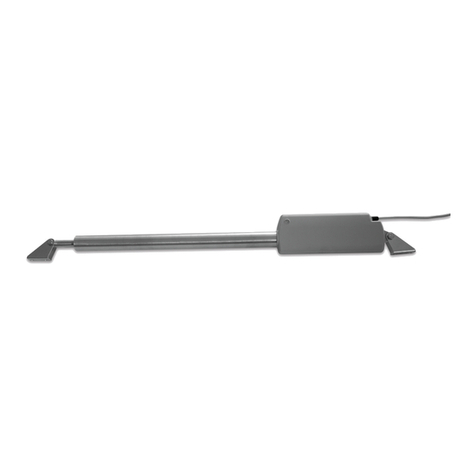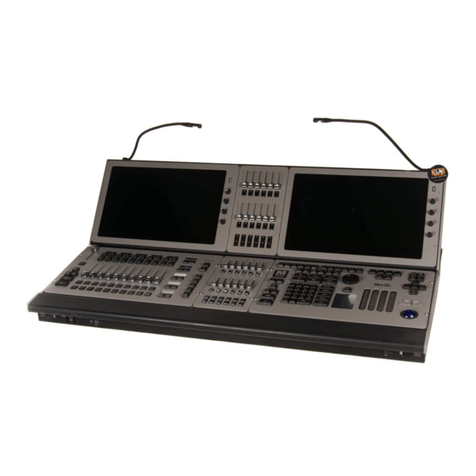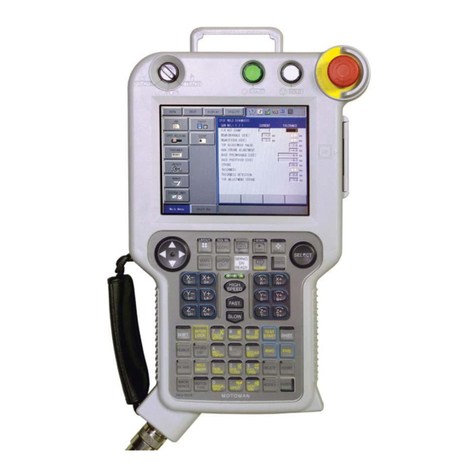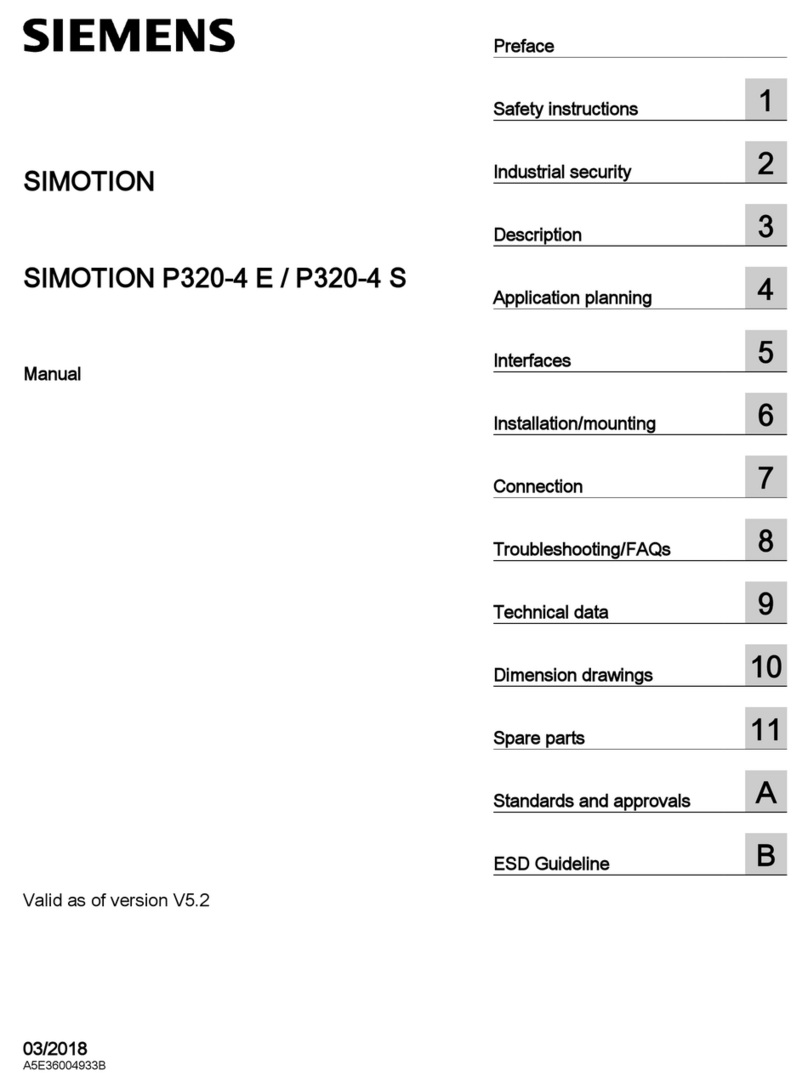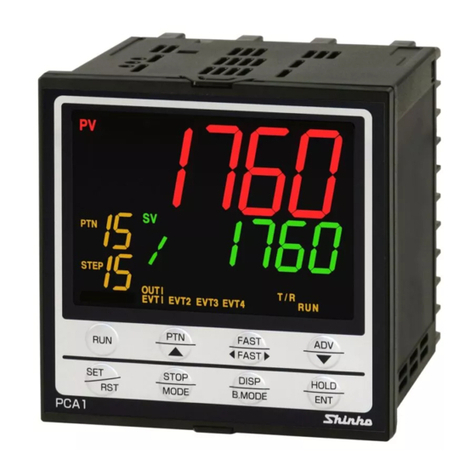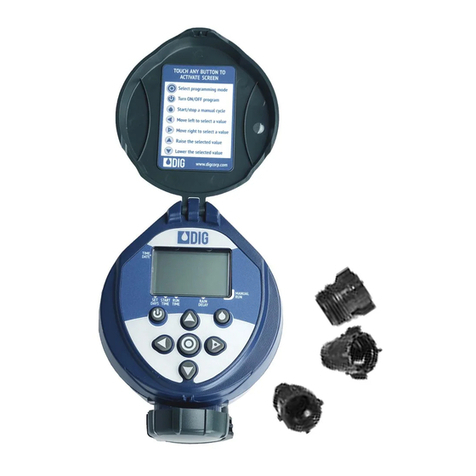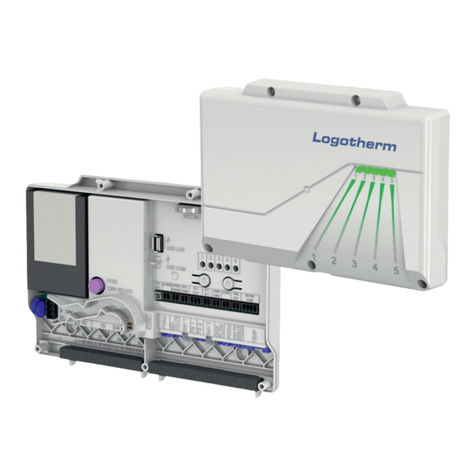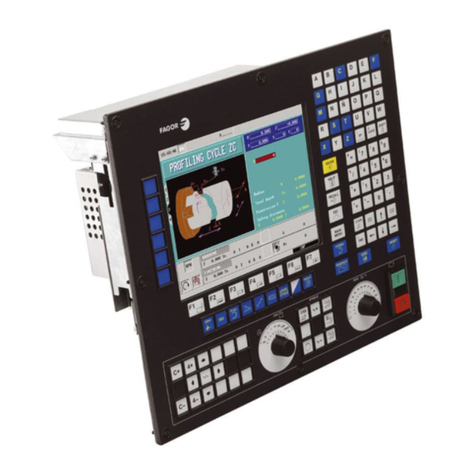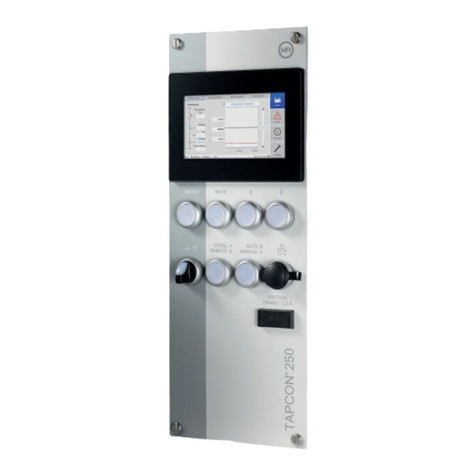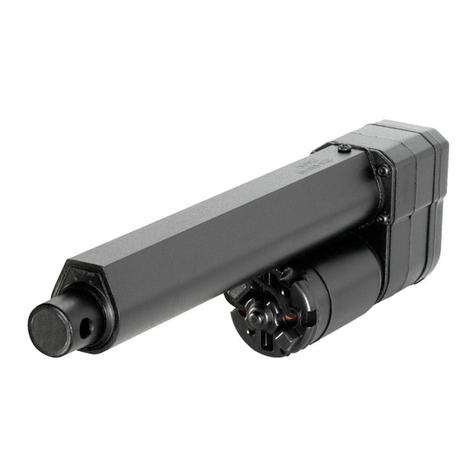nekos KATO 253 Reference manual

Code 4420052 Edition no. 3 of October 2012
K
KA
AT
TO
O
2
25
53
3
CHAIN OPERATED ACTUATOR
FORCE 250 N-MAXIMUM STROKE 360 MM
VOLTAGE 110/230V~ (A.C.), 50/60HZ –24V═ (D.C.)
MANUAL FOR INSTALLATION AND USE
English

Page 2
The machine described in this manual has been manufactured in
accordance with safety standards and conforms to the stipulations of
current standards in force. When correctly assembled, installed and
used according to the present instructions, it will not generate any
danger for persons, animals or items.
Products subject to EU directives comply with the essential
requirements stipulated by the latter. markings mean that our
products can be sold and installed throughout the European Union
without any further formality.
The marking on the product, packaging and indications for use
provided with the product indicate ‘presumed conformity to the directives’
issued by the European Community.
The manufacturer holds the technical archive with documentation
providing that products have been examined and evaluated for
conformity to directives.
Symbols used in the manual
DANGER
This indication draw the attention about potential
dangers for safety and health of peoples and animals.
INFORMATION
This information give further suggestions.
ATTENTION
This indication draw the attention about potential
dangers for the product itself.
WARNING
This indication draw the attention about potential
damages to goods.
ENVIRONMENTAL
INSTRUCTION
Environmental indication draw the attention about
potential dangers for the environment.

Page 3
Contents
1. Safety indications.....................................................................................4
2. Formulas and recommendations for installation ......................................5
2.1. Calculation of opening / closing force .............................................5
2.2. Maximum opening according to height of sash ...............................6
3. Technical information about function........................................................6
4. Manufacture and applicable standards or regulations...............................6
5. Technical data..........................................................................................7
6. ID plate and marking data .......................................................................8
7. Electrical power supply.............................................................................8
7.1. Selection of power cable section ....................................................8
8. Instructions for assembly..........................................................................9
8.1. Preparation of actuator for assembly ..............................................9
8.2. Assembly for top hung windows, outward opening........................10
8.3. Assembly for bottom hung windows ..............................................11
9. Electrical connections.............................................................................12
10. Programming the actuator......................................................................13
10.1. Stroke-end at opening...................................................................13
10.2. Stroke-end at closure....................................................................13
11. Checking for correct assembly ..............................................................13
12. Emergency manoeuvres, maintenance and cleaning ............................14
13. Troubleshooting .....................................................................................14
14. Environmental protection .......................................................................14
15. Guarantee .............................................................................................14
16. Declaration of conformity .......................................................................15

Page 4
1.Safety indications
ATTENZIONE PRIMA D’INIZIARE L’INSTALLAZIONE DI QUESTA MACCHINA,LEGGERE
ATTENTAMENTE E COMPRENDERE LE SEGUENTI INDICAZIONI DI SICUREZZA;SONO UTILI
PER PREVENIRE CONTATTI DI CORRENTE ELETTRICA,FERIMENTI ED ALTRI
INCONVENIENTI.CONSERVARE QUESTO MANUALE PER ALTRE CONSULTAZIONI.
Series KATO 253 chain actuators have been designed to move windows.
Use for any applications other than those indicated must be authorised by the
manufacturer after technical review of the assembly.
The following safety indications should be observed carefully.
The appliance must be installed by competent and qualified technical
personnel.
After removing packaging, check for any damage on the appliance.
Plastic bags, polystyrene, small metal parts such as nails, staples etc should be
placed out of the reach of children as they constitute a potential source of risk.
Before connecting the appliance, check that the power supply has the same
specifications as those indicated on the technical data label on the appliance.
This machine is destined exclusively for the use for which it has been designed
and the manufacturer accepts no responsibility for damage incurred by improper
use.
The actuator is destined exclusively for installation indoors. For any special
application we recommend you consult the manufacturer beforehand.
The actuator must be installed in accordance with the manufacturer’s
instructions. Failure to respect these instructions could compromise safety.
Power supply installation must comply with any regulations in force.
To ensure efficient separation from the grid, an approved type of bipolar pulse
switch should be used. An omnipolar general power switch with minimum
distance of 3 mm between contacts should be installed upstream of the control
line.
Do not use solvents or jets of water to wash the appliance. The appliance
should not be submerged in water.
Repairs should only be performed by qualified personnel at assistance centres
authorised by the manufacturer.
Always request exclusive use of original spare parts. Failure to respect this
condition could compromise safety and invalidate the benefits contained in the
warranty for the appliance.
In the event of any problems or queries, consult your agent or contact the
manufacturer directly.

Page 5
ATTENTION
With bottom hung windows injury could be caused if the window accidentally falls.
An appropriately sized flexible link arm or fall prevention safety system designed to
resist a force equal to at least three times the total weight of the window MUST be
installed.
Danger of crushing or dragging. During function, when the actuator closes the
window, a force of 300N is exerted on the bead of the frame, enough to crush
fingers in the event of distraction.
Ensure that the stroke-end selection is less than one centimetre from
mechanical stop blocks, stroke limiters or any physical obstacles blocking
opening of the sash.
In the event of breakage or malfunction, switch the appliance off at the general
switch and call for the services of a qualified technician.
2.Formulas and recommendations for installation
2.1. Calculation of opening / closure force
Using the formulas on this page, approximate calculations can be made for the force
required to open or close the window considering all the factors that determine the
calculation.
Symbols used for the calculation
F (Kg) = Force for opening or closing
P (Kg) = Weight of the window (mobile sash only)
C (cm) = Opening stroke (actuator stroke)
H (cm) = Height of the mobile sash
For horizontal light domes or
skylights
F = 0,54 x P
(Eventual weight of snow or wind on the
cupola should be calculated separately).
For vertical windows
TOP HUNG WINDOWS,OUTWARD OPENING (A)
BOTTOM HUNG WINDOWS (B)
F = 0,54 x P x C : H
(Eventual load of favourable or unfavourable wind
on the sash should be calculated separately.)

Page 6
2.2. Maximum opening according to height of sash
The actuator stroke is in accordance with the height of the sash and its application.
Check that the actuator stroke does not touch the profile of the sash and that the
chain does not exert force on the window frame (Measurements in mm).
ATTENTION.For safety reasons the actuator should not be assembled if
dimensions are inferior to those indicated in the table below. In the event that
the height of the sash should be lower, call on the manufacturer to check the
appliance.
Mode of installation
Selection of actuator stroke
240
360
Light domes, skylights or vertical top hung windows
opening outwards with frontal assembly
400
550
Top hung windows opening outwards with horizontal
assembly
400
550
Bottom hung windows (motor on frame)
400
550
Bottom hung windows (motor on sash)
Consult manufacturer
3.Technical information about function
The chain actuator opens and closes the window using a double row steel chain
inside a sheath. Movement is generated using electrical energy that powers a
reduction motor controlled by a functional electrical device.
Windows can be programmed to open and the device allows chain opening at 240 and
360 mm.
When the window returns to start position, that is during closure, the stroke-end
uses an electronic self regulating process with absorption of energy and no
regulation is therefore required.
The actuator is produced by the factory with the stroke-end for return set at around
+1 cm (out by 1 cm). This allows the actuator to be assembled without electrical
energy powering movement and means that the window remains closed after
assembly.
The joint between actuator and support brackets is quick, requires no fixing screws
(NEKOS patent) and allows the actuator to rotate to follow the track of the chain even
on shorter windows.
4.Manufacture and applicable standards or regulations
The chain operated series 253 KATO actuator has been designed and
manufactured to open and close top hung windows; bottom hung windows;
dormer windows; light domes and skylights. It has been specifically designed for
ventilation and climate control and any other use is prohibited unless previously
authorised by the manufacturer.

Page 7
Electrical connections must comply with standards in force on the design and
production of electrical appliances.
The actuator has been manufactured according to European Union directives and
conforms to marking.
Any eventual service or control device for the actuator must be produced according to
standards in force and must comply with the standards issued by the European
Community.
The actuator is packaged in cardboard boxing and each package contains:
Electrical actuator with either 110÷230V~ (a.c.) 50/60Hz or 24V═ (d.c.) with
electrical cable directly connected to the machine.
Drilling template.
Standard support brackets (A).
Bracket for bottom hung window (C).
Bracket for top hung window (D).
Instructions manual.
5.Technical data
Model
KATO 253/230V
KATO 253/24V
Force exerted by thrust and traction
250 N
Strokes (can be selected at any time)
240, 360 mm
Power supply voltage
110÷230V~ (a.c.)
50/60Hz
24V═ (d.c.)
Rated absorbed current
0,180 A
0,800 A
Power absorbed at nominal load
~ 30 W
~ 18 W
No load speed
13,5 mm/s
12,8 mm/s
Duration of no load stroke (240-360 mm)
18 s –27 s
19 s –28 s
Double electrical insulation
YES
Type of service
S2of 3 min
Operating temperature
- 5 + 65 ºC
Protection index for electrical devices
IP30
Adjustment of connection to window frame
Automatic definition of position
Parallel powering of two or more motors
YES (max 30 actuators)
Synchronised function
Not foreseen
Static hold force
1500N
Stroke-end at opening
At absorption of power
Stroke-end at closing
At absorption of power
Length of power cable
1 m
Dimensions
356x56x33,5 mm
Weight
0,840 Kg
0,820 Kg
The data indicated in these figures is not binding and is subject to variation without notification.

Page 8
6.ID plate and marking data
All actuators have marking and are destined for use in the
European Union without further requirements.
The marking on the product, packaging and indications
for use provided with the product indicate ‘presumed
conformity to the directives’ issued by the European
Community.
The manufacturer holds the technical archive with
documentation providing that products have been
examined and evaluated for conformity to directives.
ID plate data are indicated on a polyethylene adhesive
label applied externally on the outside of the container,
printed in black on a grey background. Values conform to EC requirements in force.
See figure for example of labelling.
7.Electrical power supply
The KATO 253 actuator is commercially available in two versions identified
according to electrical specifications:
1. KATO 253 230V~ (a.c.): runs on grid tension of 110/230V~ (a.c.), 50/60Hz
(±10%), with a three wire cable (LIGHT BLUE, common neutral; BLACK, phase
open; BROWN, phase closed).
2. KATO 253 24V═ (d.c.): runs on 24V═ (d.c.), with two wire cable, LIGHT BLUE,
connected to the + (positive) opens; Brown, connected to the + (positive)
closes.
24V═ low voltage actuators can be powered using a station with emergency battery
or approved Class II power supply unit (double safety insulation) with an output
voltage of 24V═ (-15% ÷ +25%, ie. min. 20,4V, max. 30V).
7.1. Selection of power cable section
For 24V═ (dc) power supply cable section must be checked and calculated according
to cable length. The following table indicates maximum cable lengths for connection
to motors.
Cable section Maximum cable length
4.00 mm² ~ 270 m
2.50 mm² ~ 170 m
1.50 mm² ~ 100 m
0.75 mm² ~ 50 m
0.50 mm² ~ 35 m

Page 9
8.Instructions for assembly
These indications are for specialised technical personnel and basic work and
safety techniques are not indicated.
All preparatory, assembly and electrical connection operations must be performed by
specialised technical personnel to guarantee optimal function and service of the
actuator. Check that the following fundamental conditions have been met:
Actuator specifications must be sufficient for movement of the window without
encountering any obstacle. The limits indicated in the technical data table
must not be superseded (page 7) and the most appropriate stroke should be
selected. Calculations should be checked using the formula indicated on
page 5.
Attention. Check that the electrical power supply corresponds to that
indicated on the TECHNICAL DATA label on the machine.
Ensure that the actuator has not been damaged during transport, first
visually and then by powering in both directions.
Check that the width of the inside of the window (where the actuator is to
be assembled) is over 375 mm, otherwise the actuator should not be
installed.
Check that once the actuator has been installed the
distance between the fixed part of the window frame
(where the actuator is to be assembled) and the
mobile part of the window frame (where the bracket
is to be fixed) is greater than or equal to 0 mm (Fig.
1). If this is not the case the actuator will not function
correctly as the window will not close correctly. If
required, add additional thickness below the support
brackets to reset the quota.
For bottom hung window frames injury could be caused by accidental falls
of the window. An appropriately sized flexible link arm or fall prevention safety
system designed to resist a force equal to at least three times the total weight of
the window MUST be installed.
8.1. Preparation of actuator for assembly
Before starting assembly of the actuator, prepare the following material for
completion, equipments and tools.
For fixing onto metal window frames: M5 threaded inserts (6 pieces), M5x12 flat
headed metric screws (6 pieces).
For fixing onto wooden window frames: self threading screws for wood Ø4.5 (6
pieces).
Figure 1
>=0

Page 10
For fixing onto PVC window frames: self threading screws for metal Ø4.8 (6
pieces).
Equipment and tools: measuring tape, pencil, drill/screwdriver, set of drill heads
for metal, insert for screwing in, electricians pliers, screwdrivers.
8.2. Assembly for top hung windows, outward opening
Aside the drawing of specific application using
accessories provided. For different mountings,
please contact manufacturer.
A. Trace centrepoint X in pencil onto the window frame
(Fig.2).
B. Use brackets “A” art. 4010002 and hinge “D” art.
4010005 (provided) (Fig.3).
C. Apply the template onto the window frame (fixed part),
taking care to ensure that the axis of the template
coincides with centrepoint X traced earlier (Fig.4).
Attention: for non coplanar window frames, cut the
grey part of the template along the red line and apply
onto the mobile part of the window frame, taking care
to keep it in the same reference position for the Xaxis.
D. Bore the window frame at the points indicated on the
template (Fig.5).
E. Apply the brackets (A) to the window frame using flat
head screws as indicated above. Check both
horizontal and vertical alignment of brackets.
F. Assemble the hinge for top hung windows (D) onto the
mobile part of the window frame using the reference
points indicated on the template.
G. Complete assembly between chain terminal and quick
hook using the Ø4x32 pin provided and insert into
central position (Fig.6).
H. Hook the actuator onto the brackets inserting the two
channels at the end of the actuator into the pins
provided.
I. Rotate the actuator 90°, bring the chain terminal up to
the hinge and insert the pin into the channel of the
latter. Connect the quick hook onto the bracket. At initial
connection the hook will present some resistance, this
is normal as pieces need to adjust to their sockets.
J. Perform the electrical connections according to the
diagram below or the label on the feeder cable.
K. Check that the output of the chain is perfectly aligned
with the bracket. In the event that this should not be the
case, loosen the fixing screws and reposition the
bracket correctly.
Outward application
Figure 2
Figure 3
Figure 4
Figure 5
D
A
A

Page 11
L. Perform a complete test of opening and closing of the
window frame. After closure, check that the window
frame is completely closed and check pressure against
the seals.
M.The stroke-end of the actuator during return is
automatic. The appliance exerts traction of over 280N
to guarantee perfect pressure against the seals.
Figure 6
8.3. Assembly for bottom hung windows
Aside the drawing of specific application using
accessories provided. For different mountings, please
contact manufacturer.
a) Before starting works, at least two flexible mechanical link
arms or other form of safety stops MUST be installed to
guarantee hold and prevent accidental falling of the
window in order to provide safe working conditions.
b) Trace centrepoint X in pencil onto the window frame
(Fig.7).
c) Use brackets “A” art. 4010002 and hinge “C” art.
4010006 (provided) (Fig.8).
d) Apply the template onto the window frame (fixed part),
taking care to ensure that the axis of the template
coincides with centrepoint X traced earlier (Fig.9).
Attention: for non coplanar window frames, cut the grey
part of the template along the green line and apply onto
the mobile part of the window frame, taking care to
keep it in the same reference position for the X axis.
e) Bore the casement at the points indicated on the
template (Fig.5).
f) Apply the brackets (A) to the window frame using flat
head screws as indicated above. Check both horizontal
and vertical alignment of brackets.
g) Assemble the bracket for bottom hung windows onto
the mobile part of the window frame using the reference
points indicated on the template.
h) Complete assembly between chain terminal and quick
hook using the Ø4x32 pin provided and insert into
central position (Fig.6).
i) Hook the actuator onto the brackets inserting the two
channels at the end of the actuator into the pins
provided.
j) Rotate the actuator 90°, bring the chain terminal up to
the hinge and insert the pin into the channel of the latter.
Connect the quick hook onto the rod (Fig. 10).
k) Perform the electrical connections according to the
Inward application –
transom window
Figure 7
Figure 8
Figure 9
A
A
C

Page 12
diagram below or the label on the feeder cable.
l) Check that the output of the chain is perfectly aligned
with the bracket. In the event that this should not be the
case, loosen the fixing screws and reposition the bracket
correctly.
m)Perform a complete test of opening and closing of the
window frame. After closure, check that the window
frame is completely closed and check pressure against
the seals.
Figure 10
n) The stroke-end of the actuator during return is automatic. The appliance exerts
traction of over 280N to guarantee perfect pressure against the seals.
9.Electrical connections
Machines have been equipped with a power connection cable which complies with
safety regulations and protection against radio disturbance.
Before performing the electrical connection consult the table below and check
correspondence between the feeder cable and the tension data on the actuator
label.
Voltage
Cable
length
Number
of wires
Colour of
wires
110/230V~ (a.c.), 50/60Hz
1 m
3
LIGHT BLUE
BLACK
BROWN
24V═ (d.c.)
1 m
2
LIGHT BLUE
BROWN
If feeder cables require extending to the control button for low voltage actuators
(24V═DC), cable sections should be selected accordingly. Conductor sections are
indicated in the table on page 8 (Selection of cable section). For cabling, follow the
diagrams below.
110/230V~ (a.c.), 50/60Hz 24V═(d.c.)

Page 13
10. Programming the actuator
10.1. Stroke-end at opening
At one end of the actuator is a pin which can be adjusted
using a screwdriver and an indicator arrow (see photo) to
set stroke length (240 or 360 mm).
The actuator cover has two reference marks:
1 mark (240 mm stroke);
2 marks (360 mm stroke).
Attention: never select 360 stroke when actuator is at 240 end stroke; inner
selector can irremediably brakes.
10.2. Stroke-end at closure
The stroke-end at closure is automatic and cannot be programmed. The actuator
stops when the power encountered by the actuator when the window reaches
complete closure is absorbed and the seals are pressed right in, or when the
absorbed power is over 15% of the nominal power. In this case, at maximum load
the actuator exerts traction of over 280N.
After each closure or intervention of electronic protection devices, the chain will
move about 1 mm in the opposite direction to give correct compression to the seals
and release the mechanical parts.
Check that hinges and support brackets are rigidly attached to the window frame
and all screws correctly fixed into position. For aluminium window frames, do not
use self threading or self perforating screws as these will tear the profile after a few
manoeuvre; use metric screws with threaded inserts (see indication on page 9).
11. Checking for correct assembly
Check that the window is perfectly closed at corners and that there are no
obstacles caused by incorrect positioning during assembly.
Check that when the window frame is closed the chain terminal is at least a
few millimetres away from the actuator body. This will ensure the window is
properly closed and seals are correctly compressed. In the event that this
should not be the case there is no guarantee that the window is closed
correctly.
Check that hinges and support brackets are aligned to each other and tightly
fixed against the window frame with screws fixed correctly into position.
Check that the window reaches the desired position according to the stroke-
end selected.
360 mm
240 mm

Page 14
12. Emergency manoeuvres, maintenance or cleaning
In the event that the window frame should require manual opening due to power
failure or problem with the mechanism or for normal maintenance or external cleaning
of the window frame, the NEKOS patent allows rapid unhooking of the chain. To
perform this operation, proceed as follows:
1. Unhook the flap of the quick hook locking the chain
terminal to the bracket.
2. Hold the window in one hand and remove the pin of
the chain terminal from the two u channels on the
bracket with the other. (This operation should be
performed with the window open at least 10 cm to
facilitate unhooking of the chain).
3. Manually open the window frame.
ATTENTION: DANGER –the window could fall as the sash is no longer
held in position by the chain.
4. After maintenance and/or cleaning repeat points 1 and 2 in reverse order.
13. Troubleshooting
Possible causes of malfunction during installation or use.
Problem
Possible cause
Solution
Actuator does not work
No electricity at feeder
Check status of circuit
breaker or safety switch
Cable not connected or
wire disconnected.
Check electrical
connections at reduction
motor
14. Environmental protection
All materials used in the manufacture of this appliance are recyclable.
We recommend that the device itself, and any accessories, packaging, etc. be
sent to a centre for ecological recycling as established from laws in force on
recycling.
The device is mainly made from the following materials: aluminium, zinc, iron,
plastic of various type, cuprum. Dispose materials in conformity with local
regulations about removal.
15. Certificate of guarantee
The manufacturer will guarantee good function of the appliance. The
manufacturer shall undertake to replace defective parts due to poor quality
materials or manufacturing defects in accordance with article 1490 of the Civil
Code.
The guarantee covers products and individual parts for 2 years from the date of
purchase. The latter is valid as long as the purchaser possesses proof of

Page 15
purchase and completion of all agreed conditions of payment.
Guarantee of good function of appliances agreed by the manufacturer implies
that the latter undertakes to repair or replace free of charge and in the shortest
period possible any parts that break while under warranty.
The purchaser is not entitled to any reimbursement for eventual direct or indirect
damage or other expenses incurred. Attempt to repair by personnel unauthorised
by the manufacture shall render the warranty null and invalid.
The warranty does not cover fragile parts or parts subject to natural wear and
tear or corrosion, overload, however temporary etc. The manufacturer will accept
no responsibility for eventual damage incurred by erroneous assembly,
manoeuvre or insertion, excessive stress or inexpert use.
Repairs performed under guarantee are always "ex factory of the manufacturer".
Respective transport expenses (out/back) are the responsibility of the purchaser.
16. Certificato di conformita’
DECLARATION OF CONFORMITY
NEKOS S.r.l. - Via Capitoni, 7/5
36064 Mason Vicentino (VI) –ITALY
0424 411011 –Fax 0424 411013
www.nekos.it info@nekos.it
Il sottoscritto legale rappresentante del costruttore NEKOS S.r.l.
The undersigned, representative of the following manufacturer: NEKOS S.r.l.
dichiara
declares
che il prodotto elettrico:
that the electrical product:
è conforme alle disposizioni legislative che traspongono le seguenti direttive:
Direttiva 2004/108 CE (Direttiva EMC) e successivi emendamenti
Direttiva 2006/95 CE (Direttiva Bassa Tensione) e successivi emendamenti
complies with the following Directives:
2004/108 EC Directive (EMC Directive) and subsequent amendments
2006/95 EC Directive (Low Voltage Directive) and subsequent amendments
Ultime due cifre dell’anno in cui è affissa la marcatura CE:
10
Last two figures of the year of the CE marking:
Luogo:
Mason Vicentino (VI) - Italy
Place:
Data:
25/05/2010
Date:
Firma:
Giuliano Galliazzo
President
Signature:
Modello / Model Designazione / Designation
KATO 253 230V
Attuatore a catena 110/230V~ (a.c.)
Chain actuator 110/230V~ (a.c.)
KATO 253 24V
Attuatore a catena 24V═ (d.c.)
Chain actuator 24V═ (d.c.)
Other manuals for KATO 253
1
This manual suits for next models
2
Table of contents
Other nekos Controllers manuals
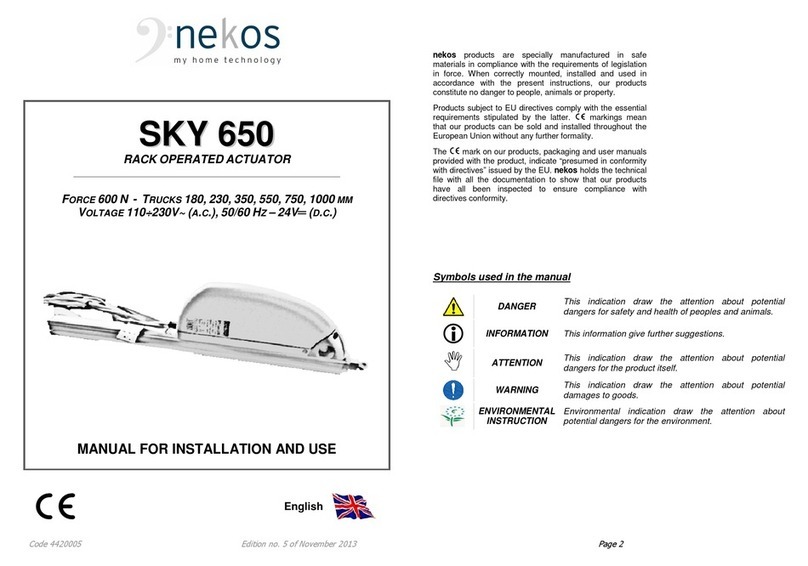
nekos
nekos SKY 650 User manual
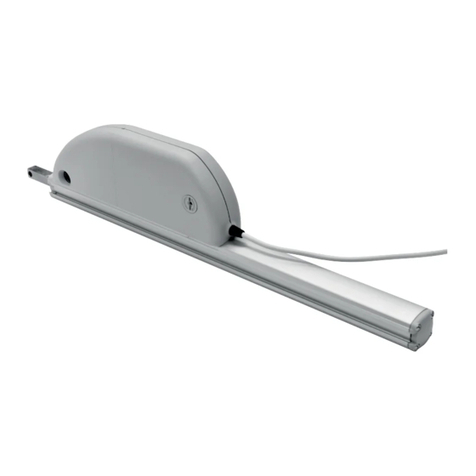
nekos
nekos SKYRO 650 User manual
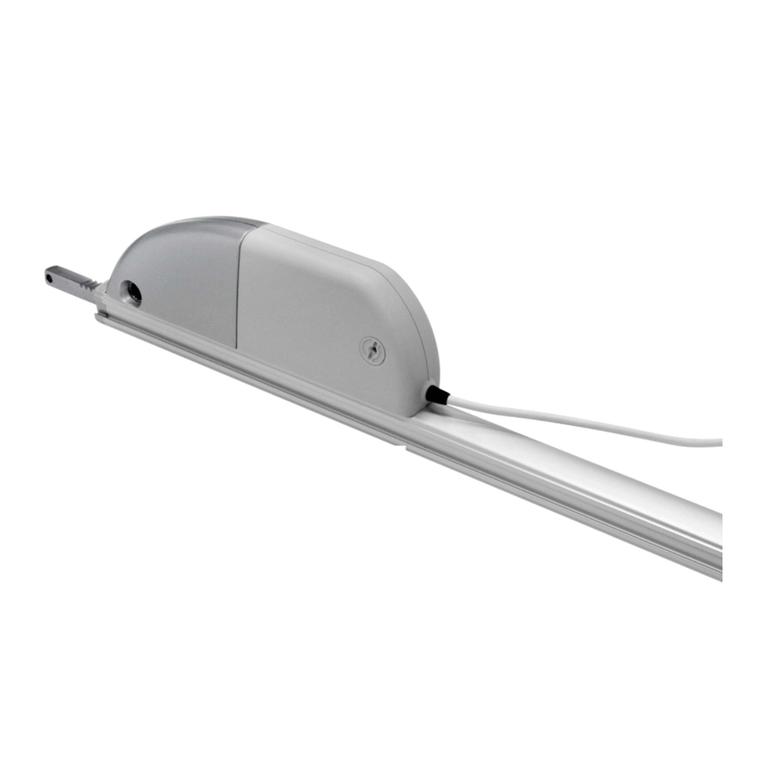
nekos
nekos SKYRO 850 User manual
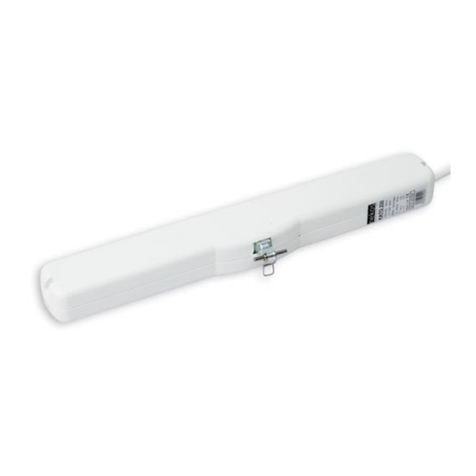
nekos
nekos KATO RADIO 230V User manual
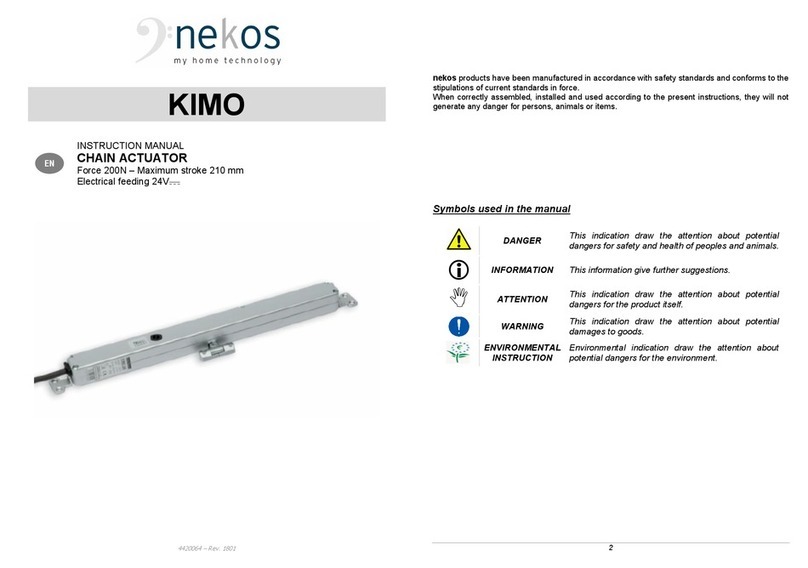
nekos
nekos KIMO User manual
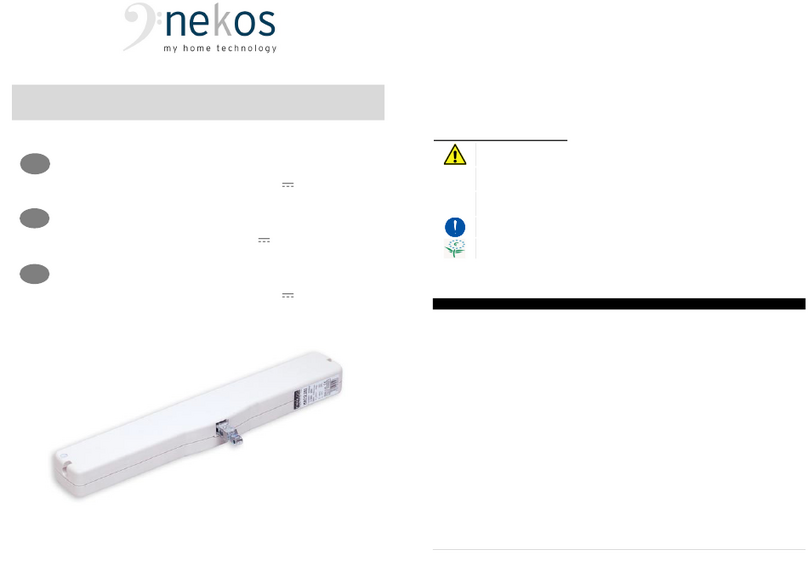
nekos
nekos KATO 253 User manual
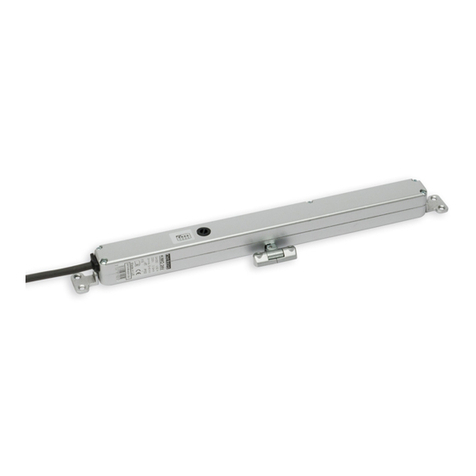
nekos
nekos KIMO 24V User manual
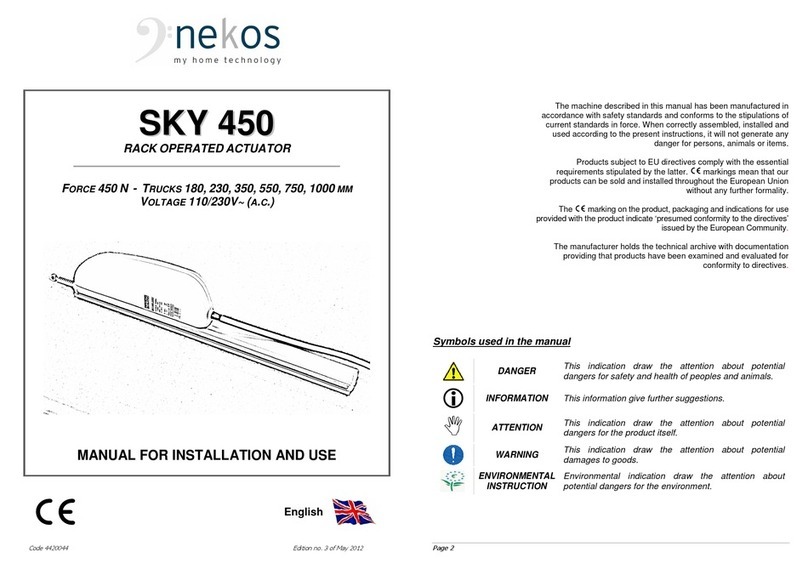
nekos
nekos SKY 450 Quick start guide
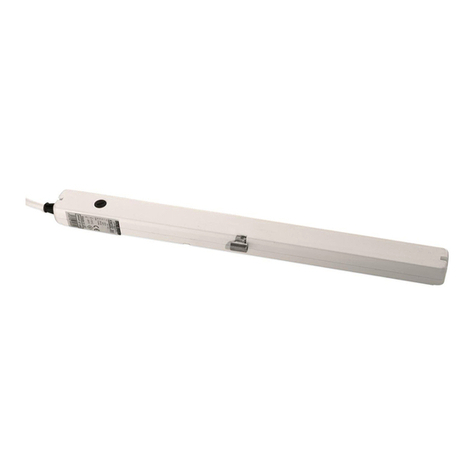
nekos
nekos KIMO 202 User manual
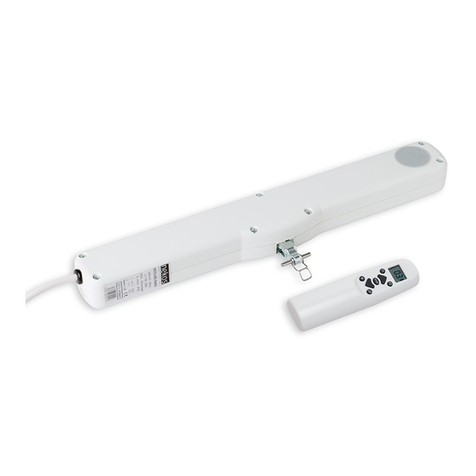
nekos
nekos KATO ADV RADIO User manual
Popular Controllers manuals by other brands
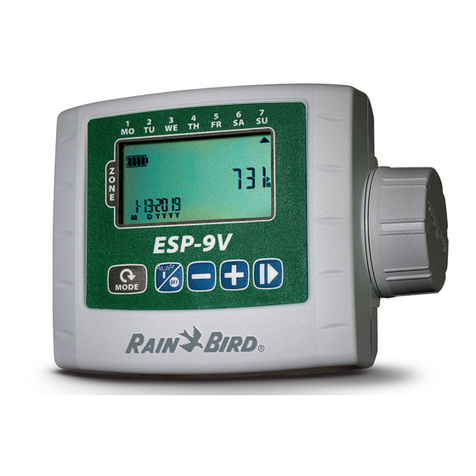
Rain Bird
Rain Bird ESP-9V user manual

Honeywell
Honeywell Touchpoint 1 Technical manual
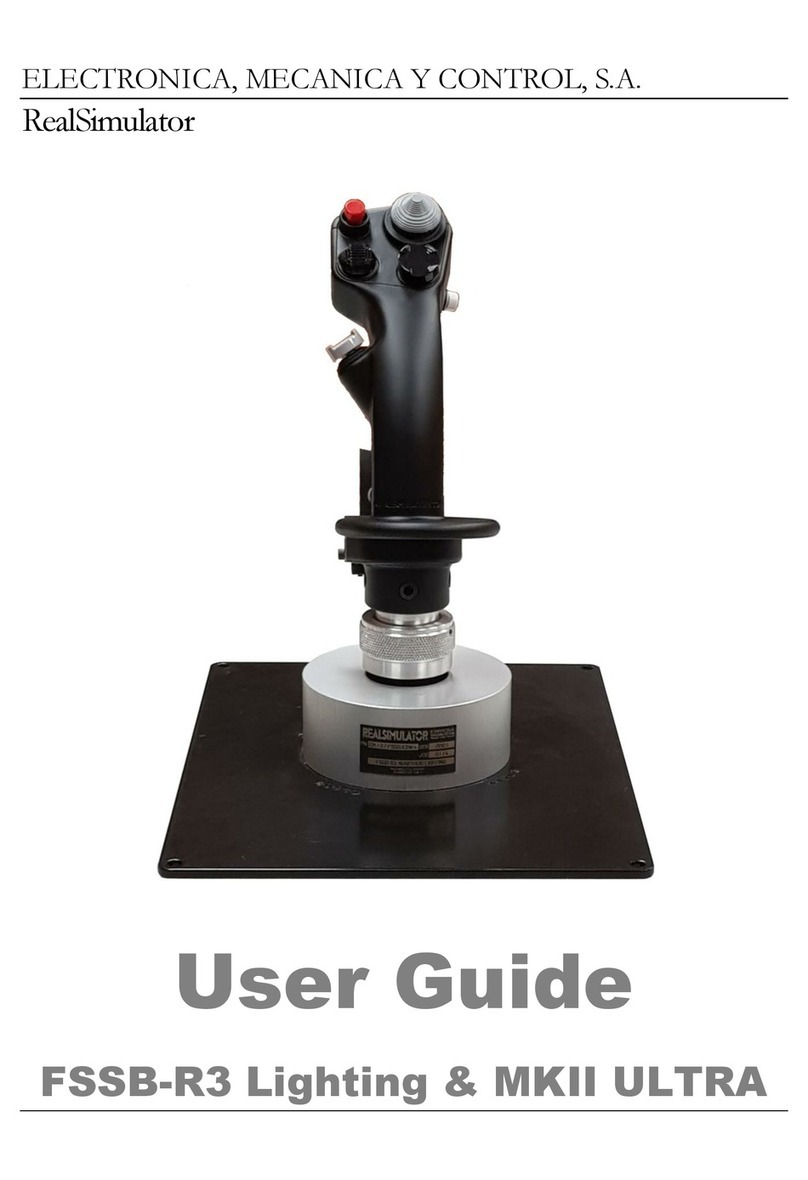
RealSimulator
RealSimulator FSSB-R3 Lighting user guide
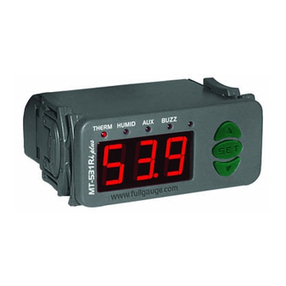
Full Gauge Controls
Full Gauge Controls MT-531Ri plus quick start guide
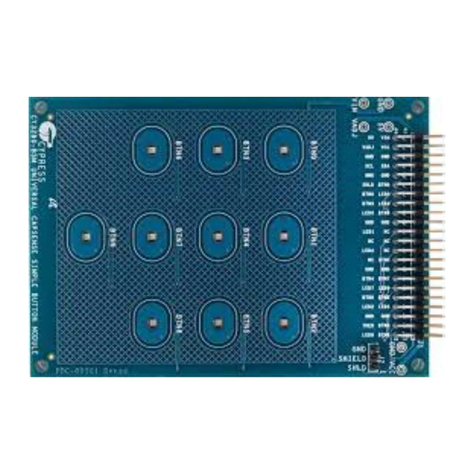
Cypress
Cypress UNIVERSAL CAPSENSE quick start guide

HAVEN LIGHTING
HAVEN LIGHTING Q Series Operation manual


